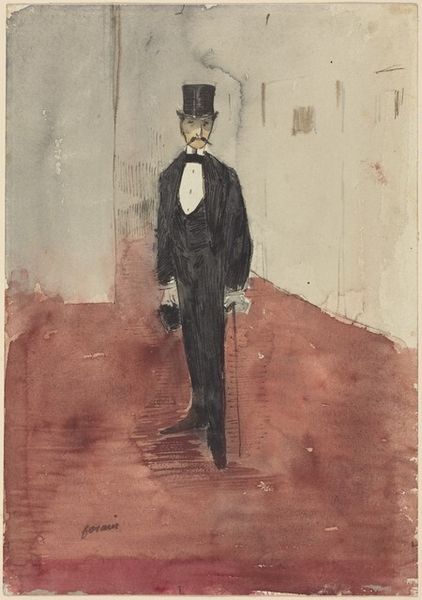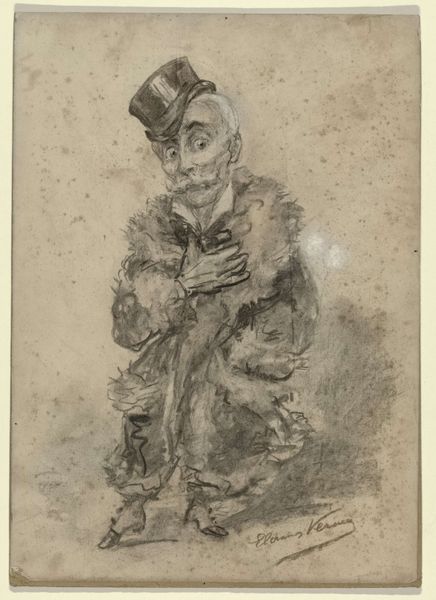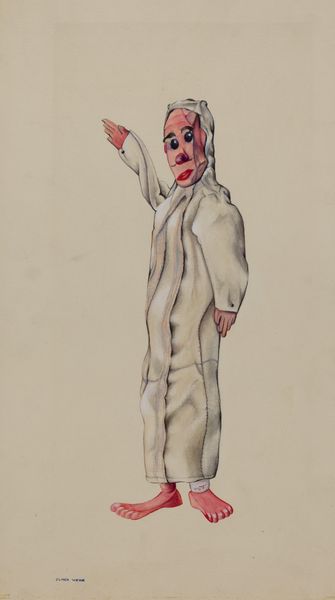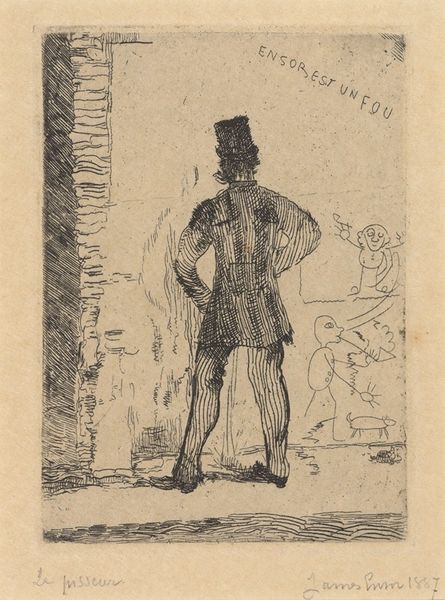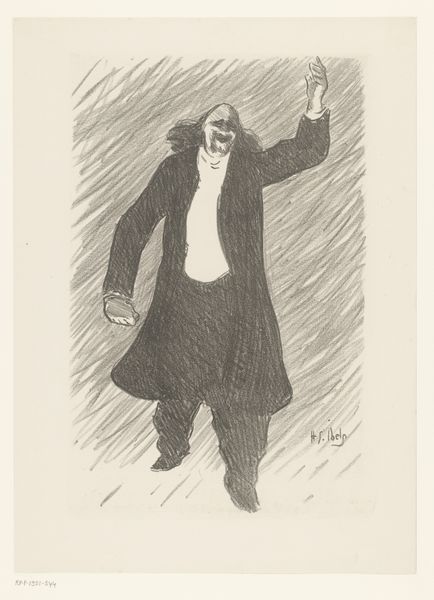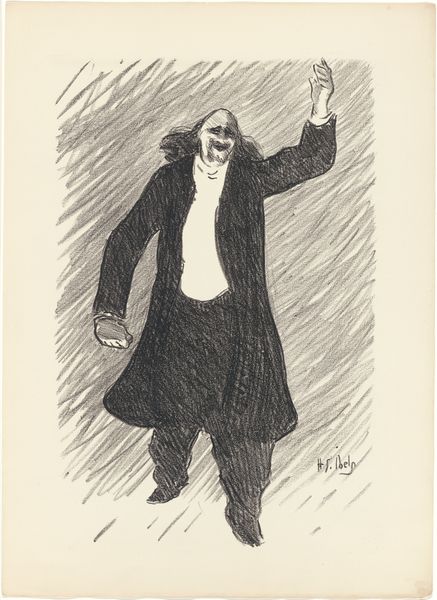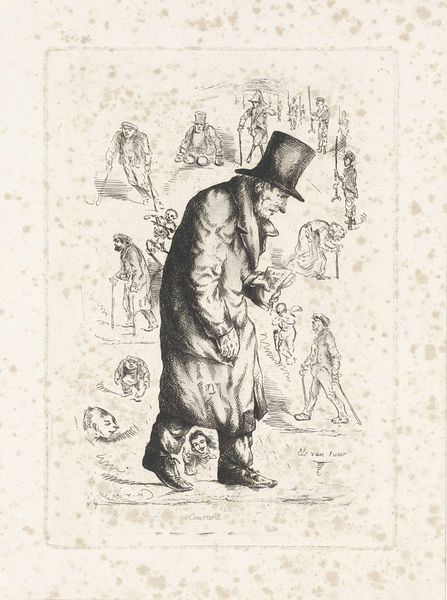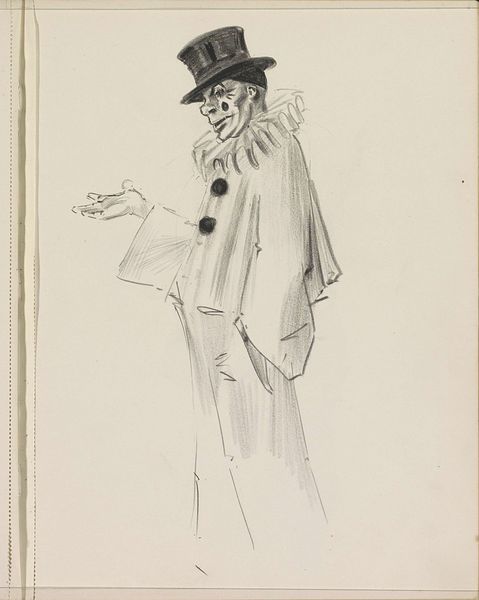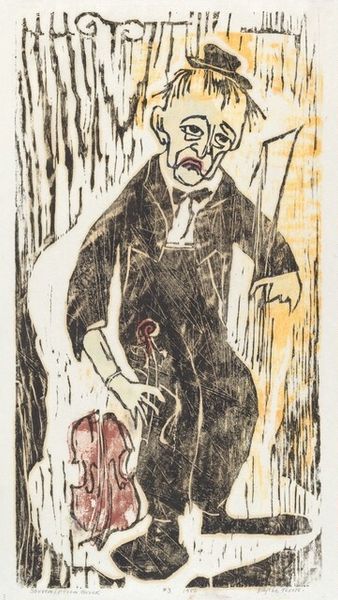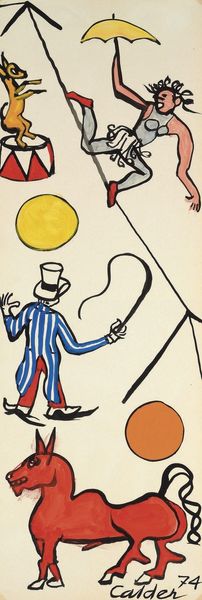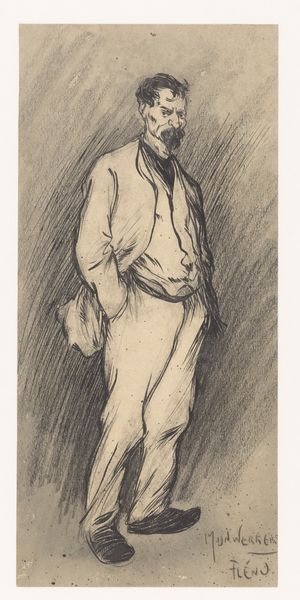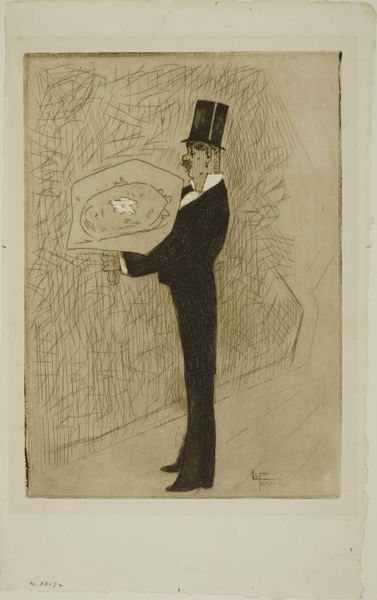
coloured-pencil, print
#
portrait
#
coloured-pencil
# print
#
figuration
#
coloured pencil
Copyright: National Gallery of Art: CC0 1.0
Curator: This print, created in 1956, is entitled “Mime” by Stella Drabkin. It appears to be made from coloured pencil. Editor: My first impression is the tension. The figure seems to be reaching for something, or perhaps recoiling. The high contrast spotlights the figure's isolation in a dramatic and shadowy space. Curator: Indeed, the use of coloured pencil emphasizes this inherent conflict, with its combination of vibrant and desaturated areas. The almost frantic quality of the medium contrasts strongly with the controlled lines. Editor: Mimes often present a subversive kind of public performance. Does Drabkin perhaps mean for us to ponder a public persona versus a private one? Is the figure’s exaggerated appearance a social commentary on theatricality and societal roles during the 1950s? Curator: From a formal perspective, consider how the upward diagonal of the body creates an unsettling compositional imbalance. His slightly awkward posture and hand gestures highlight the precariousness of this performance. The artist plays with our expectations of a "true" mime; instead, we get something more disturbing. Editor: I wonder if the muted colours Drabkin has used work to create the sense of looking back into the past? In a way, the mime's theatrical persona becomes both deeply individual and highly representative of an era obsessed with image and spectacle. Perhaps we are invited to think about our role as an audience. Curator: Yes, his painted-on facial expressions and upturned gestures contrast with a subtle underlying sorrow that undermines the playfulness. Editor: Thinking about the history of performance traditions, the choice of a Mime figure provides powerful reflections on performance culture itself. This encourages discussions about self-expression within a society that often encourages conformity. Curator: Exactly, focusing on such intricacies certainly brings fresh and interesting perspective on this artist's craft. Editor: Reflecting on this Mime, one is left to ponder not only art, but our lives as constantly acted and viewed stories.
Comments
No comments
Be the first to comment and join the conversation on the ultimate creative platform.
